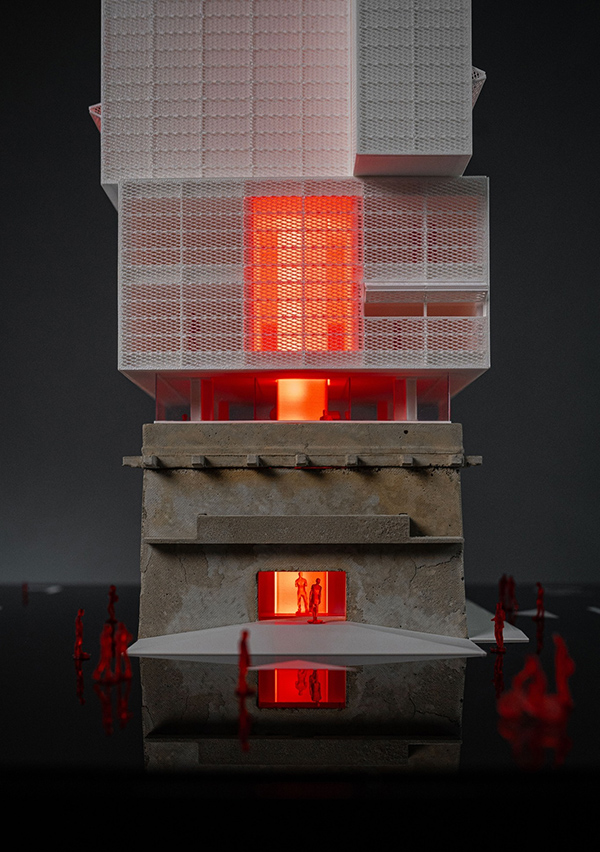
The exhibition at the Riding School of Prague Castle showcases the history of Czech and Slovak architecture
 |
The exhibition illustrates how the appearance of cities and landscapes has changed over a period of more than a century. More than 20 state and private institutions from both countries participated in the preparation of the exhibition, led by curators Matúš Dula and Vladimír Šlapeta. The exhibition consists of a multitude of architectural models, both original and specially created for this exhibition. The models are accompanied by photographs of architectural works or facsimiles of selected architectural drawings, publications, and other documents.
The exhibition presents the history of Czech and Slovak architecture in several sections. A historical axis illustrates the most important trends in the development of architecture from 1918 to 1989, starting with national style, Dutch civilism, poetism, functionalism, romanticism, and conservatism of the wartime, the period of the renewal of the national economy in the late 1940s, socialist realism, a return to the principles of modernity and late modern trends, postmodernism, and the brutalism of the 1980s.
The achievements of construction in the era of democracy and free market economy are shown in a section entitled "Architecture of a New Era." Cities present themselves through independent exhibitions that highlight their cultural and economic significance in an open Europe. The chronicle of Czech and Slovak architecture shows the conditions under which buildings were created during the development of Czechoslovakia in the context of world history.
In the final part of the exhibition, there is space for meetings, book launches, lectures, discussions, programs for children and youth, or exhibitions for the blind, which feature tactile models of selected architectural works. The exhibition is accompanied by a publication titled "Czech and Slovak Architecture," which includes more than 100 architectural works with descriptions and illustrations.
The English translation is powered by AI tool. Switch to Czech to view the original text source.
0 comments
add comment







